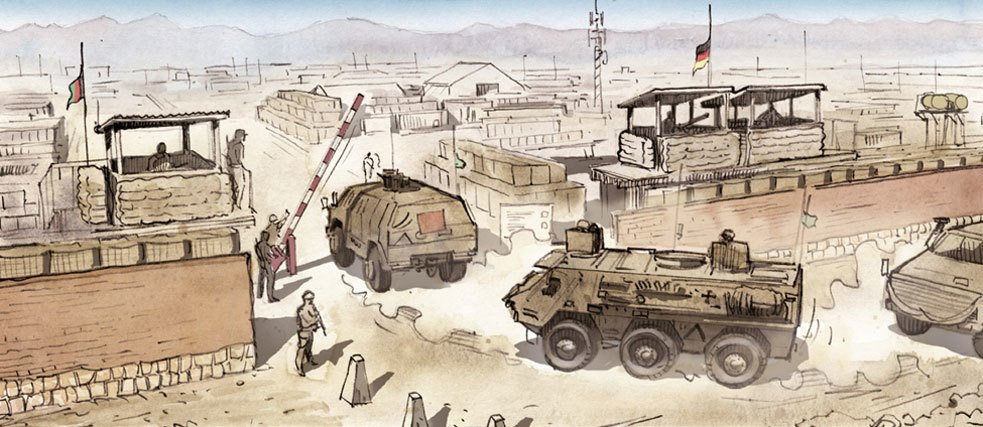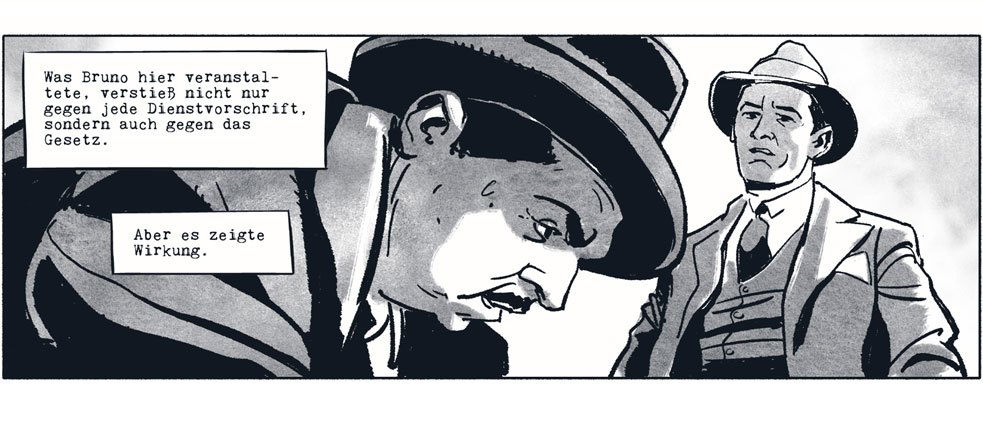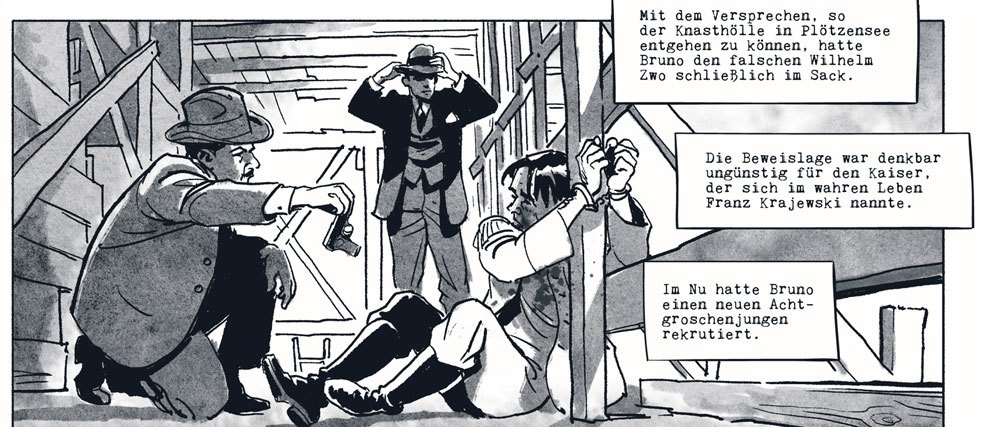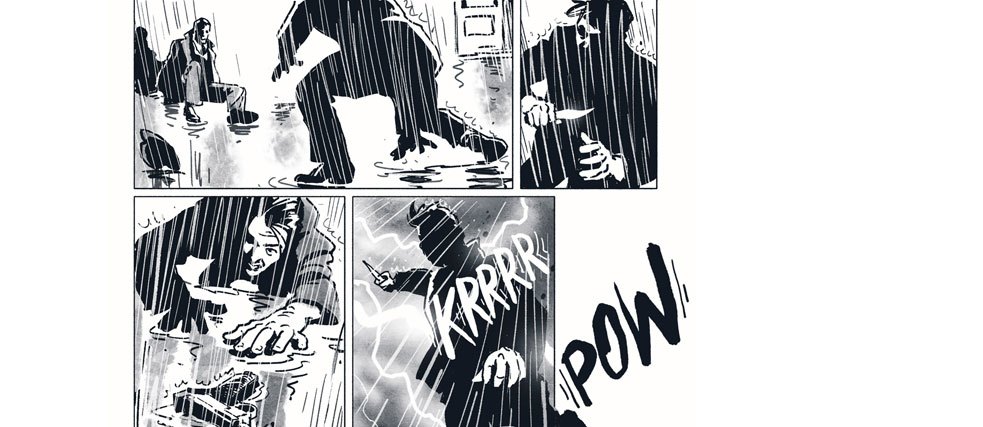Arne Jysch
From film to comic
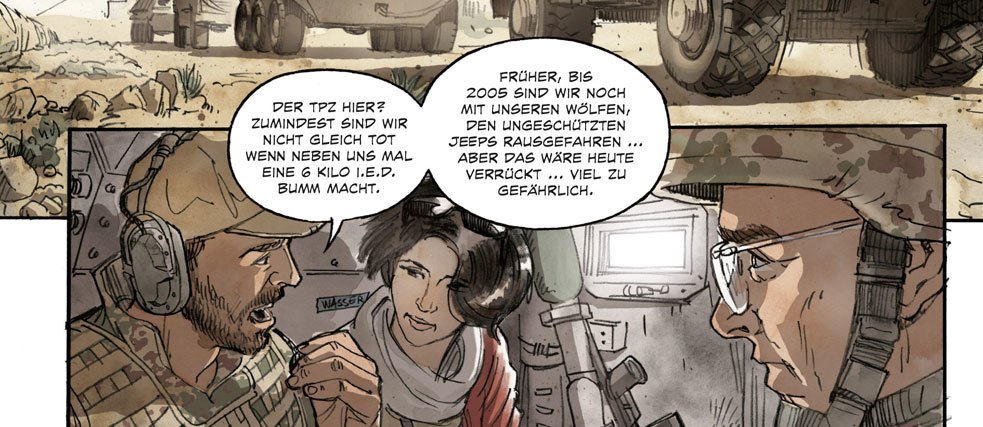
Without having ever been in Afghanistan himself, Arne Jysch succeeded in painting a realistic picture of the country and of the military operations there. | © Arne Jysch/Carlsen Verlag, 2012
In “Wave and Smile”, Arne Jysch reconstructs the day-to-day life of a German army soldier in Afghanistan. “Der nasse Fisch” (i.e. The Wet Fish) is an adaptation of Volker Kutscher’s best-selling novel of the same name and focuses particular attention on the details of 1920s Berlin.
By Stefan Pannor
At a glance
Arne Jysch was born in Bremen in 1973. He studied animation at the Film University Konrad Wolf in Potsdam from 1995 to 2000, since which time he has worked as a storyboard illustrator in Berlin. His projects include the storyboard for the film adaptation of the best-selling novel The Physician. His first comic was published in 2012: Wave and Smile depicts day-to-day life for German soldiers in Afghanistan.A film rejected
Jysch sees comics and films as being closely connected: “I first imagined Wave and Smile as a film, and sent out a short presentation to film production companies”, he explains. After his idea was rejected, he focused on his skills as a storyboard illustrator and sent off the same presentation to comic publishers. When turning his draft work into a fully-fledged comic, he drew on the experiences of Afghanistan reporter Julia Weigelt and German army personnel. This helped him paint as realistic a picture as possible of the country and of the military operations there – without having ever been in Afghanistan himself.A special work
While still working on Wave and Smile, Jysch produced the first drafts for a comic adaptation of Volker Kutscher’s Der Nasse Fisch (i.e. The Wet Fish), a crime novel set in the 1920s. For reasons of space, he broke up the plot structure, shortened some elements and turned the character of Inspector Gereon into a first-person narrator. “In the books, he is so nicely reminiscent of the classic noir novels and films, which I found very fitting”, explains the illustrator. He additionally incorporated some things he particularly likes himself, from the cinema – “genres of the Hitchcock or James Bond variety” – and from Frank Miller’s Sin City comic series. In doing so, Jysch combines German history with the US classics of the genre.The importance of research
“One year of research, one year of writing and one year of drawing” is how Jysch sums up the work that went into Wave and Smile. Der nasse Fisch involved even more work: “I had thought that an adaptation would be easier than researching a story of my own. But I was wrong.” Jysch created extensive archives of pictures, including everything “from interior furnishings to cabins, buildings and vehicles”. An appendix in the comic lists more than 20 books that provided additional facts. What results is a reconstruction of everyday life in Berlin at the end of the Weimar Republic – a reconstruction that is vivid, calm and concentrated, particularly in the way it depicts streets, city squares and nightlife.In the artist’s own words
“What is nice about the comic adaptation of Der nasse Fisch is that we were able to reach an audience beyond the usual comic readership. I enjoyed being able to further dispel some of the prejudices that people have about comics and graphic novels.”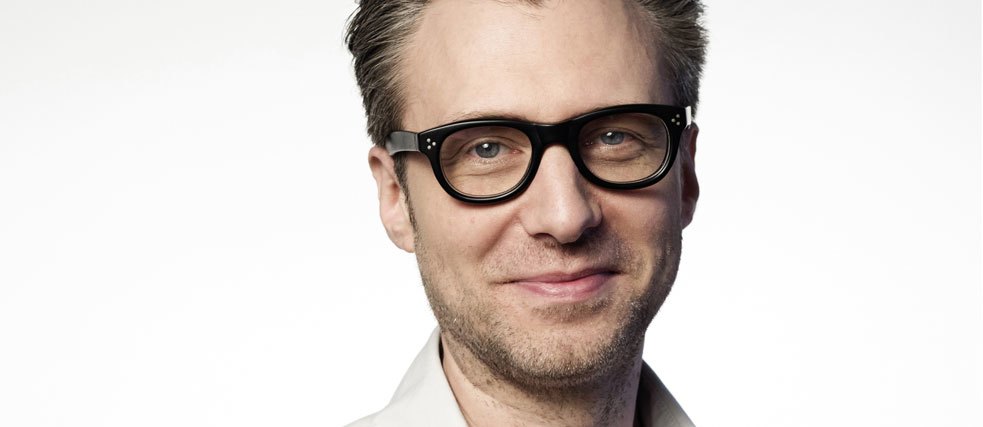 Arne Jysch | © Carlsen Verlag GmbH by Claudius Pflug
Arne Jysch | © Carlsen Verlag GmbH by Claudius Pflug
